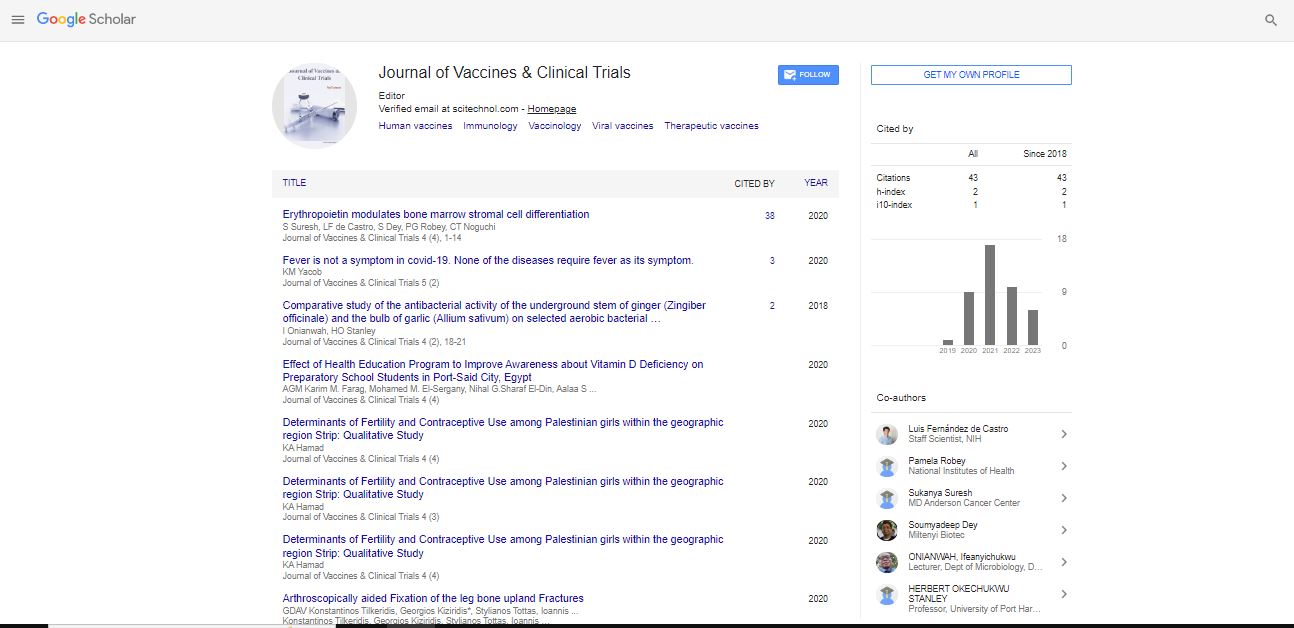Perspective, Jou Of Vac Cli Tri Vol: 6 Issue: 1
Growing Threat: Vaccine Escape Mutant Hepatitis B Viruses
David Michael*
Department of Microbiology, University of Melbourne, Melbourne, Australia.
*Corresponding Author: Michael D
Department of Microbiology, University of Melbourne, Melbourne, Australia.
Email: davidmichael@gmail.com
Received date: 18 January, 2022, Manuscript No. JVCT-22-58821;
Editor assigned date: 20 January, 2022; PreQC No. JVCT-22-58821 (PQ);
Reviewed date: 31 January, 2022, QC No. JVCT-22-58821;
Revised date: 10 February, 2022, Manuscript No. JVCT-22-58821 (R);
Published date: 17 February, 2022, DOI: 10.4172/JVCT.100054.
Keywords: Hepatitis
Introduction
HBV is a member of hepadna virus genus. HBV is a DNA virus with a diameter of 42 nm consisting of an outer lipid envelope which contains proteins HBsAg, pre-S1 and pre-S2. HBsAg is a product of ‘s’ gen. The s gene involves ‘a’ epitope-124. Codones and this region is the affecting region for anti-HBs antibody binding. Vaccine/ Immunoglobulin escape mutations occur at HBV DNA s gene’s ‘a determinant’ region, 127-149. These mutations cause inability to bind of anti HBs antibody to HBsAg. Also, these variants are transmissible among humans although individuals were vaccine. The result of our literature investigation, the number of the cases which caused by vaccine escape mutant variants were found to be increased, especially in high endemicity region. Because of that, we think vaccine escape mutants are growing very important public health problem.
Hepatitis B virus is a DNA virus which is a member of hepadna viridae. It is responsible nearly 300 million chronic HBV infection and over 1 million deaths per year due to HBV-related end-stage liver disease, liver cirrhosis and liver cancer. HBV viruses can be present all of the body fluids and blood of the infected person. So, it can be transmitted such as perinatally, sexually, blood transfusions, unsafe injection, injecting drug with using mutual syringes and occupational exposure of health care workers. Currently, HBV viruses have been classified into 10 genotypes which can be further sub-divided into over 40 sub-genotypes. Genotype D and sub genotype D1 HBV virus infections are common in Turkey. The worldwide prevalence of chronic HBV infection in the general population is 5%, but it differs from one geographical area to another, example 0.1%-2.0% in the United States and Western Europe, 2.0%-8.0% in Eastern Mediterranean countries and Japan, and 5.0%-20.0% in South-Eastern Asia and sub-Saharan Africa. In highly endemic areas the majority of chronic carriers acquire HBV infection at birth or in the first decade of life, whereas in countries with a low endemicity, HBV transmission occurs mostly in adulthood due to unsafe sexual contact, using mutual syringes or parenteral exposure to contaminated medical equipment or blood transfusion. Because of its caused diseases, some strategies have been developed to fight HBV infection such as treating the chronically infected patients as much as possible, preventing the transmission and immunizing susceptible individuals. Among them, vaccination is the most effective by preventing individuals from contracting HBV infection. Thirty years ago the first HBV vaccine was presented to use in fight against HBV. The vaccine contains highly antigenic the sub viral particle. HBV vaccines have highly antigenic effect on immune system. It causes creating antibodies against to HBV surface antigen directly. HBsAg is a product of ‘s’ gen. The ‘a’ epitope involves and this region is the affecting region for anti-HBs antibody binding. The mutations in this area can cause conformational changes at HBsAg and create ‘vaccine escape mutant variants’. This situation is a public health threat and these mutants can cause infections at vaccine individuals. Such mutant variants may be dominant variant HBV virus in future. The aim of this review is providing attention to this point.
Immunoglobulin
Vaccine/Immunoglobulin escape mutations occur at HBV DNA s gene’s ‘a determinant’ region, 127-149 and 161-195 codones. It can be a result of previous NUC treatment. These mutant variants are capable to prevent anti HBs binding. Also, these variants are transmissible among humans. Because of that, ADAPVEM formation should be monitored. In addition, such mutated viruses can be undetectable by the current diagnostic assays. Because of that, we think, VEMs are growing very important public health problem. Required precaution methods should be taken immediately. New vaccines development studies should be done as soon as possible.
 Spanish
Spanish  Chinese
Chinese  Russian
Russian  German
German  French
French  Japanese
Japanese  Portuguese
Portuguese  Hindi
Hindi 